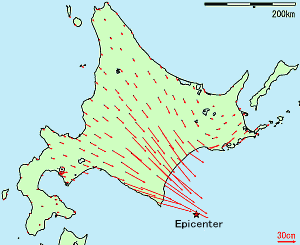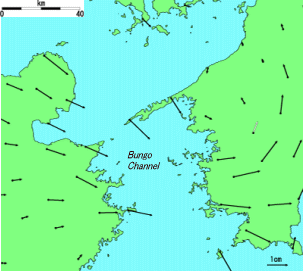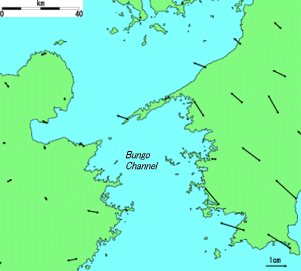Crustal Movement detected by GNSS-based Control Station
Crustal Movement detected by GNSS-based Control StationAbout Crustal Movement Monitoring by GSICrustal movements are not only caused rapidly not only by earthquake swarm or big earthquake, but also slowly by plate motions or magma activities. It is necessary for researches of earthquakes and volcanic eruptions to detect ongoing crustal deformations with precision.
Geospatial Information Authority of Japan(GSI) conducts baseline analysis everyday using 24hours GNSS observation data, therefore we can detect crustal deformation continuously. GNSS data is expected to contribute to prediction of Tokai Earthquake that is anticipated in near future, and to studies of an earthquake mechanism. Crustal movement caused by Tokachi-Oki Earthquake(September 25, 2003)A strong earthquake occurred at 19:50 (UTC) on Thursday, September 25, 2003. The magnitude 8.0 event has been located in the southeast offshore Hokkaido. The hypocentral depth was estimated at 42 km (23 miles).
Approximately up to 1m horizontal movement was detected immediately after the earthquake with GNSS observation.  (Aomori pref. fixed) Crustal movement caused by "Slow Slip Earthquake" in Bungo Channel(August,2003-January,2004)"Slow slip earthquake" is a phenomenon of slow slip of underground rock. Ordinary underground rock slip cause a big earthquake. But slow slip earthquakes don't cause ground shaking.
The upper figure shows movements at the time of slow slip, and the lower figure shows movements usually observed.  (August,2003-January,2004)  (August,2002-January,2003) (Shimane pref. fixed) |

